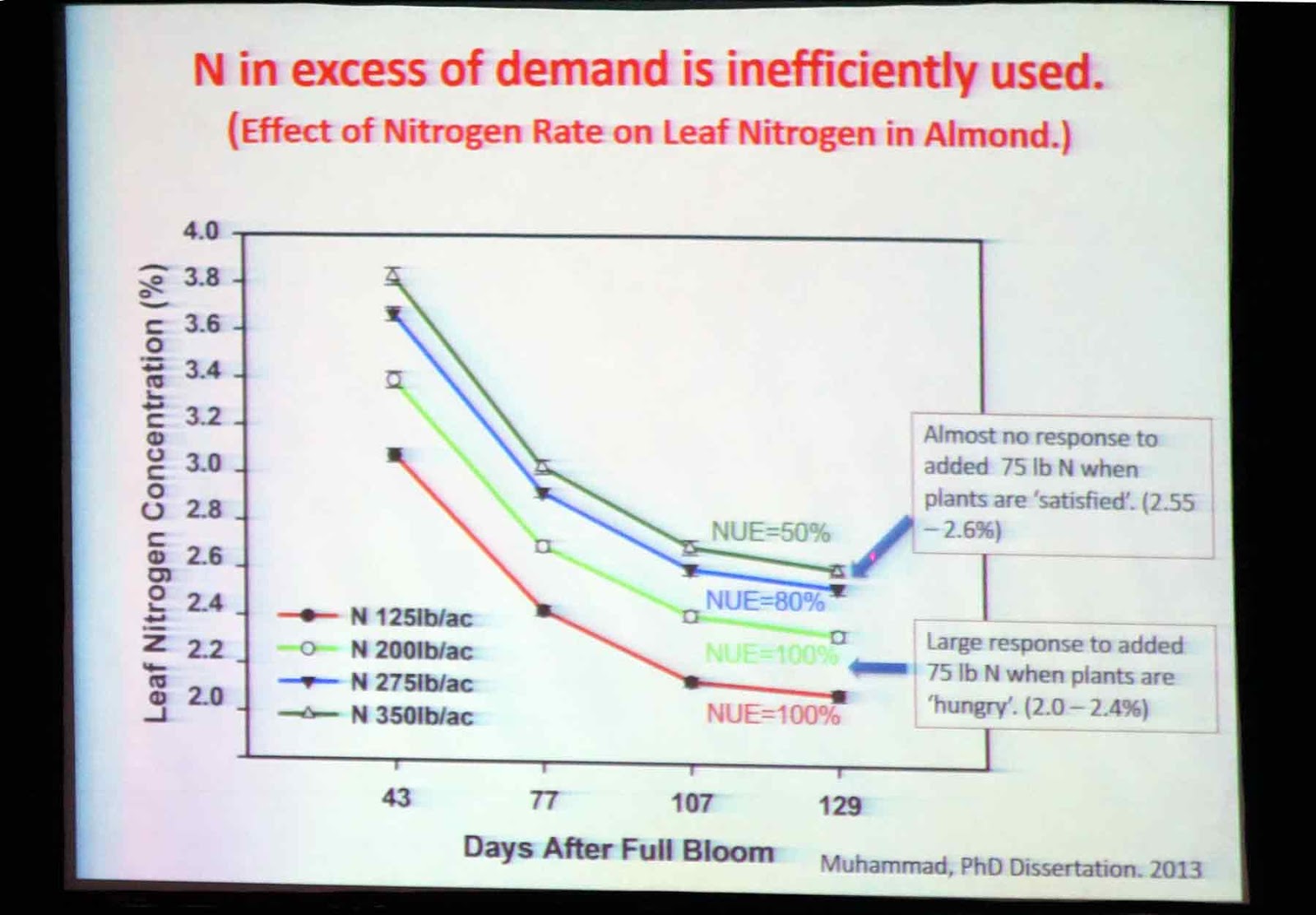
Patrick Brown is known for decades of work with tree nut crops, and insights about the almond industry.
When he spoke in Modesto this year about nitrogen needs in almonds, some of what he shared was canon, while other tips offered growers a fresh take on traditional practices.
“Really what you’re doing is balancing your supply with your demand,” Brown said. “If you can get that balance right, your trees perform well and you don’t lose your nitrogen.”
Brown started his talk by saying what “everyone knows”: 68 pounds per thousand of almond kernels is what an almond tree needs to replace what’s used in the crop.
What that doesn’t address, he said, is variability within fields.
“That’s going to become one of the really big challenges in agricultural production,” Brown said.
He stressed the importance of timing, pointing out that nitrogen that’s in the soil when the roots are not hungry is subject to loss.
“Once you get to a certain concentration, you don’t have uptake anymore. It’s as if the pig trough is full, and the animals are not hungry anymore,” Brown said. “You can go from really risky behavior a few times a year, or really risky behavior applying the fertilizer while the plant is asleep, to applying it when the plant needs it.”
80% of total nitrogen in fruit is accumulated by 130 days after full bloom, Brown said.
“It’s about supply, its about demand, and it’s about keeping that nitrogen where it needs to be,” he said. “The top 10 inches, that’s where it needs to be. Even though there are roots at four or five feet deep, they’re not very dense and not very good at consuming nitrogen.
Brown said he spent a season at Paramount orchards, estimating demand. That meant his team chopped up trees, a total of 36, over a season, to see what amounts of nitrogen was contained in different parts.
The results?
“From dormancy to early leaf-out, there is very little nitrogen uptake,” Brown said. “Which means nitrogen in the soil is at risk for loss.”
Likewise, late season uptake is very minimal unless you happen to have a very active tree.
The 68 pounds per 1000 pounds of kernels is already a generous number based on good-producing tree, Brown said.
“If you go beyond what a tree needs, you simply waste it,” Brown told growers.
Brown said that often yields are constrained in fields where nitrogen isn’t deficient, but there’s another limiting nutrient issue. Growers should instead focus on that problem, he said, rather than continue to boost nitrogen availability.